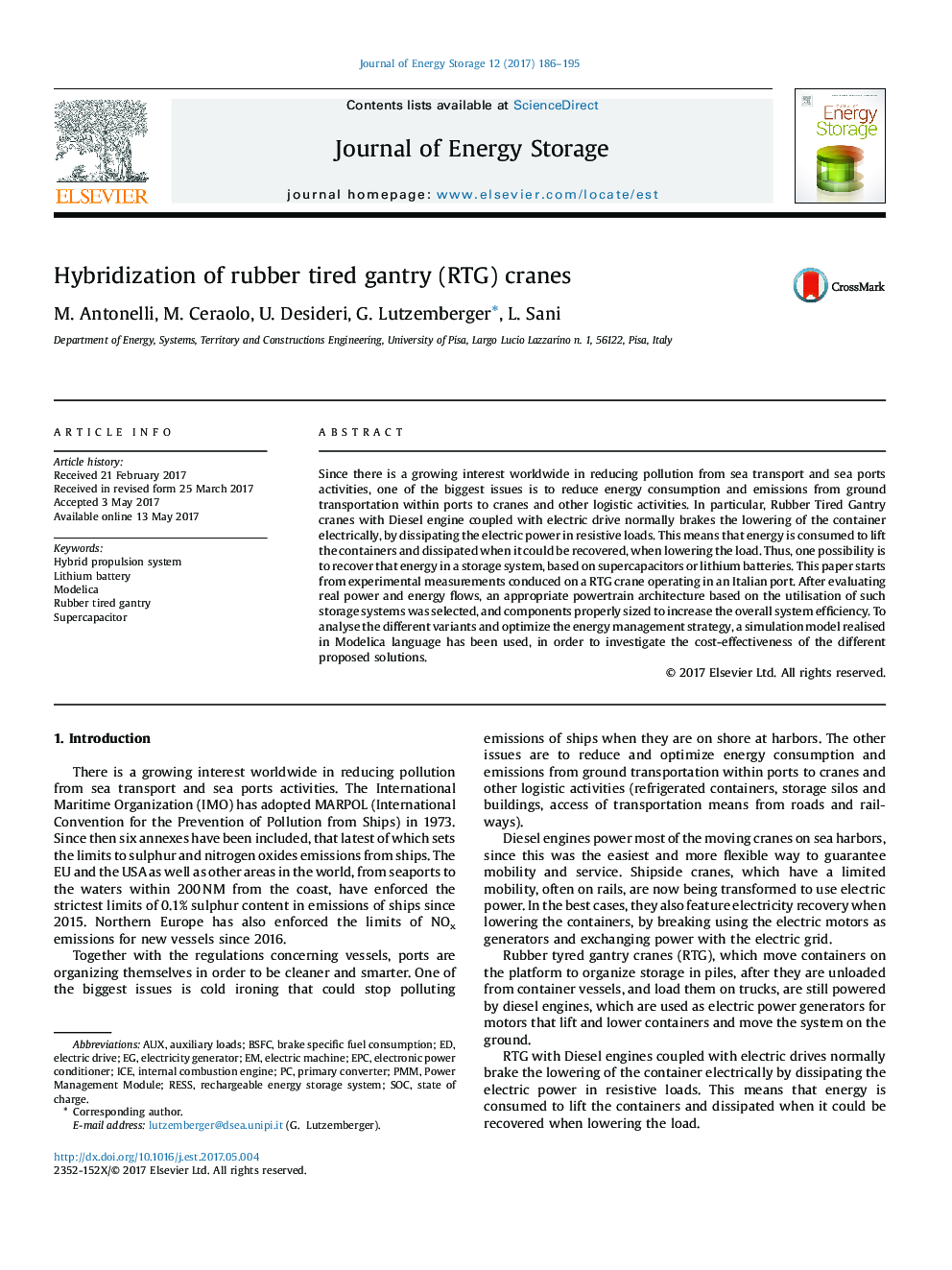| Article ID | Journal | Published Year | Pages | File Type |
|---|---|---|---|---|
| 5127299 | Journal of Energy Storage | 2017 | 10 Pages |
â¢Rubber Tired Gantry cranes are characterised by a reduced efficiency.â¢Energy storage can recover significant amount of energy, otherwise dissipated.â¢Hybridisation has been performed, and a simulation model defined.â¢Energy storage based on supercapacitors or lithium batteries was considered.â¢Cost effectiveness of hybridisation has been investigated.
Since there is a growing interest worldwide in reducing pollution from sea transport and sea ports activities, one of the biggest issues is to reduce energy consumption and emissions from ground transportation within ports to cranes and other logistic activities. In particular, Rubber Tired Gantry cranes with Diesel engine coupled with electric drive normally brakes the lowering of the container electrically, by dissipating the electric power in resistive loads. This means that energy is consumed to lift the containers and dissipated when it could be recovered, when lowering the load. Thus, one possibility is to recover that energy in a storage system, based on supercapacitors or lithium batteries. This paper starts from experimental measurements conduced on a RTG crane operating in an Italian port. After evaluating real power and energy flows, an appropriate powertrain architecture based on the utilisation of such storage systems was selected, and components properly sized to increase the overall system efficiency. To analyse the different variants and optimize the energy management strategy, a simulation model realised in Modelica language has been used, in order to investigate the cost-effectiveness of the different proposed solutions.
